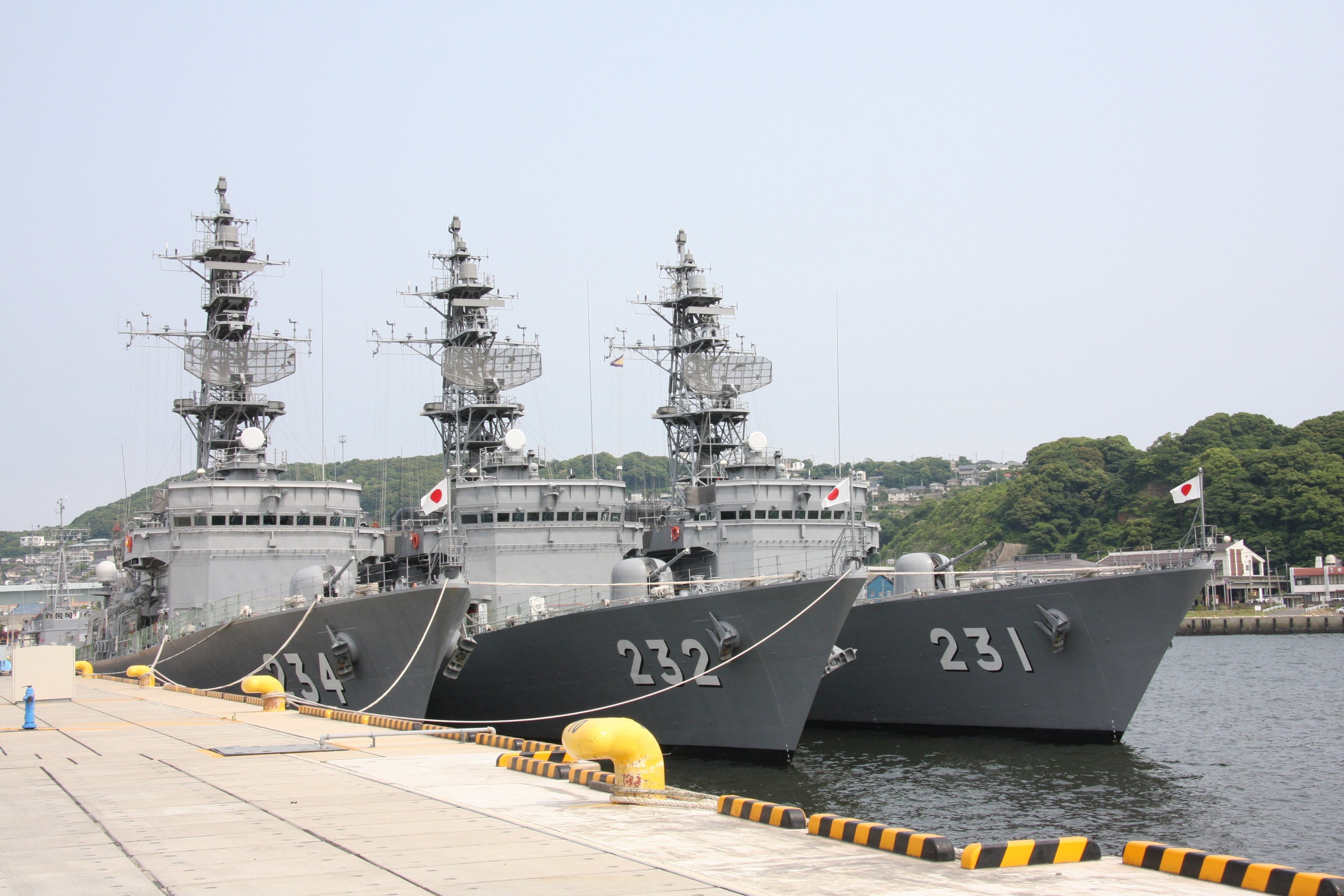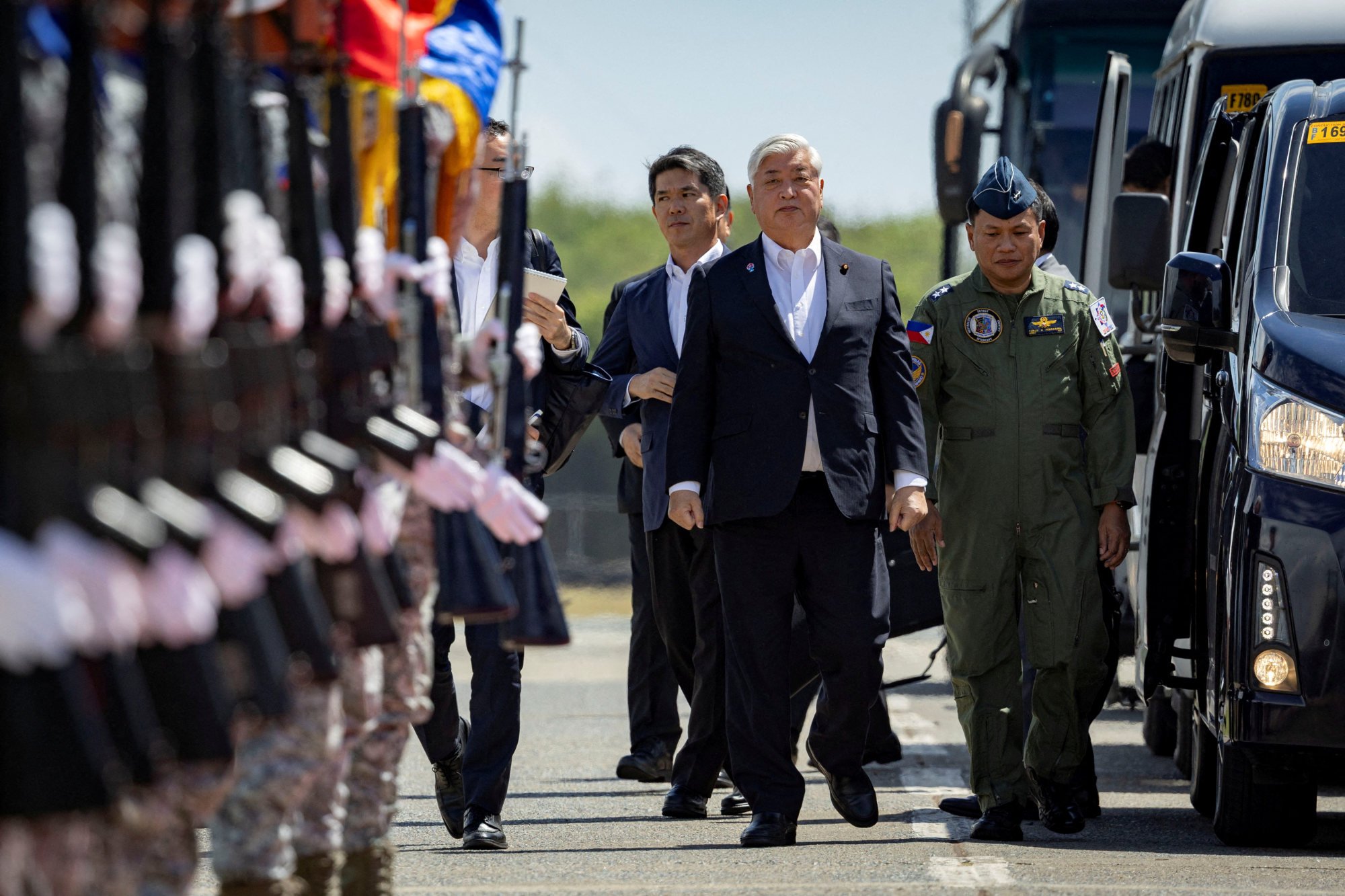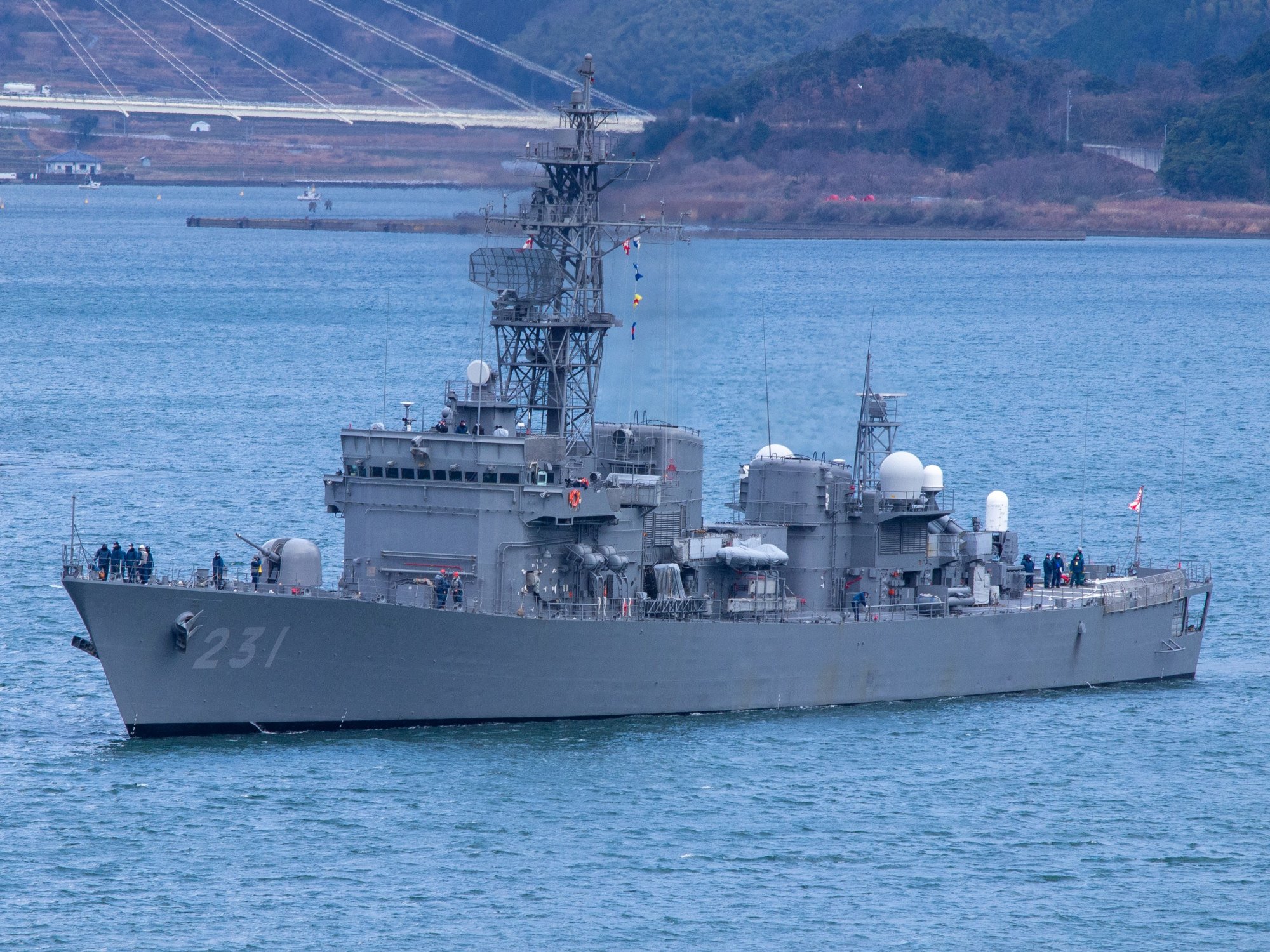Old but still gold? What Philippines can gain from Japan’s used warships
Factors such as maintenance costs and system upgrades will determine the true value of the Abukuma-class vessels’ transfer, analysts say

Japan’s unprecedented proposal to transfer six Abukuma-class destroyer escorts to the Philippine Navy could greatly boost the Southeast Asian nation’s anti-submarine capabilities – but the true value of these ageing vessels remains to be seen.
The Philippines has confirmed it is preparing to dispatch a team to Japan for a visual inspection of the six warships, which were set to be decommissioned, following an official invitation from Japan’s Ministry of Defence.
“This planned inspection forms part of exploratory discussions on the possible transfer of these naval assets,” said Captain John Percie Alcos, director of the navy’s public affairs office. He described the vessels as being “known for their reliability and versatility” and said their capabilities aligned with the navy’s operational requirements “in protecting the country’s maritime domains”.
Security analysts say the addition of these warships could reinforce Manila’s role as a security actor in the contested South China Sea, but caution that a careful assessment of maintenance costs, spare parts, system upgrades and the need for trained personnel will be required.
“This is an important test bed for how Japan transfers capability to a regional partner,” said Alessio Patalano, professor of war and strategy in East Asia at King’s College London.

He said the offer reflected Tokyo’s view of the Philippines as an increasingly strategic partner, not only in political and economic terms but also within emerging regional security frameworks designed to uphold maritime stability, such as so-called minilaterals.
Patalano added that the transfer would cement the countries’ growing partnership and help make the Philippine Armed Forces “increasingly interoperable” with Japan’s Self-Defence Forces.
The six Abukuma-class destroyer escorts are comparable in length to the Philippine Navy’s two modern frigates, BRP Jose Rizal and BRP Antonio Luna, both of which are equipped for anti-submarine warfare – as is the smaller BRP Conrado Yap.
China possessed “an assortment of some 60 submarines performing a variety of functions, distributed across theatres”, Patalano said.
“The Philippines is looking to strengthen its overall presence in these contested waters,” he told This Week in Asia. “This is first and foremost a number game. The [Abukuma]-class will help achieve that. But it is inevitable that it will also allow the Philippine Navy to enhance other areas – notably an [anti-submarine warfare] dimension – given that part of the conversation is also about maritime patrol aircraft.”
The Abukuma-class were among the first Japanese warships to employ stealth features such as angled hulls to make them less visible to radar. Each ship is typically armed with anti-ship missiles, rocket launchers for targeting submarines, torpedoes, a rapid-fire naval gun and a close-range defence system to shoot down incoming threats, according to defence website Naval Technology.
Not all of these systems may be included in the transfer, however. Japan’s “Three Principles on Transfer of Defence Equipment” restrict the export of weapons and may require that key armaments be removed. US approval may also be needed to transfer any American-made components.
Patalano said that such constraints would be subject to negotiation between Tokyo and Manila, with the agreement possibly involving ship refits or the “joint development” of new subsystems.
Unhandled type: inline-plus-widget {“type”:”inline-plus-widget”}
Australia-based security and defence expert Max Montero said “joint development” could circumvent the restrictions of Japan’s export policy. The ships could be transferred as a sale or donation, but any deal would likely need to navigate Japanese and US third-party export restrictions.
“This is where Japan may propose ‘joint development’ with the Philippines to go around the policy, by allowing transfer of technology and know-how to co-develop subsystems,” Montero said. “This also is timely since the Philippine Navy is expected to propose replacement of certain ageing or obsolete subsystems with new ones that are either similar, compatible, or already in use in [the navy’s] other existing ships.”
It’s safe to assume that despite their age, the ships remain in good conditionCollin Koh, naval affairs researcher
“The Philippines should accept these assets. I have been advocating to acquire these ships as a short- to medium-term ‘band-aid’ solution to address capability gaps while it builds up its fleet with newer, more modern ships,” Montero added.
“Getting these six ships will only require minimal expense for the Philippine government, and is a better solution than not having anything, considering funding for new ships remains a problem.”
Montero argued it was in Japan’s interest to help “strengthen the capacity of a like-minded country rather than just scrapping them as junk”. The vessels “can still pose a threat to Chinese forces and could contribute to the US alliance’s defence network”, he said.
Collin Koh, a materials engineer by training, agreed that the destroyers could have a serviceable life of “another 10 or even 20 years” with the appropriate maintenance and repairs.
“It’s safe to assume that despite their age, the ships remain in good condition and hence still have some more good life in them,” said the coordinator of projects in naval and maritime affairs at S. Rajaratnam School of International Studies’ Institute of Defence and Strategic Studies in Singapore, adding that Japan’s military and coastguard were known for “meticulously maintaining and sustaining defence materiel.”
“Warships these days serve for more than 30 years or more, even up to 50” with proper maintenance, Koh said, describing Japan’s offer as “an interim stopgap capacity that needs to be urgently filled”.

He added that the Abukuma-class offered “a relatively balanced suite of combat capabilities in its category, including anti-ship missiles as well as a rather comprehensive anti-submarine warfare package”.
The retention or removal of these systems, he said, would depend on “political sensitivity surrounding the transfer of certain lethal weapon systems, and the readiness of the recipient to operate and maintain them, besides the consideration of whether these systems can cater to current and projected operational requirements”.
Even if certain systems were removed, Koh suggested that the Philippine Navy could retrofit the ships with more modern equipment.
He further noted that the Abukuma class could fill a “critical” gap in the navy’s ability to detect submarines within the archipelago, being optimised for littoral anti-submarine warfare.
The warships “would help deepen” Japan-Philippine ties, “promote sharing of crucial defence and naval related intelligence between the two militaries [and] build higher levels of interoperability between them”, Koh said.
Japan, he observed, sees its security interests, national survival and economic prosperity as “intertwined with Southeast Asia”.
The transfer “also promotes Japan as a reliable security partner willing to do more than just its traditional slate of security capacity-building aid to regional partner”, Koh said, and would “also deepen its influence in Southeast Asia and more broadly speaking the Indo-Pacific”.
Manuel Mogato, a Pulitzer Prize-winning journalist with decades of experience covering defence and security, told This Week in Asia that the Philippine Navy must weigh whether operating and maintaining the warships would be cost effective.
He recalled the navy’s 2011 acquisition of the US Coast Guard’s Hamilton-class cutter, which became the BRP Gregorio del Pilar and proved costly to operate due to its combined diesel or gas propulsion system. The Abukuma-class destroyers employ a similar system.
While the Philippine navy is “small”, with about 20,000 personnel, and may lack sufficient trained sailors to operate the warships, the Japanese vessels can act as “an instant force multiplier” for the navy, according to Mogato, who added that Japan “will earn goodwill” from the gesture.